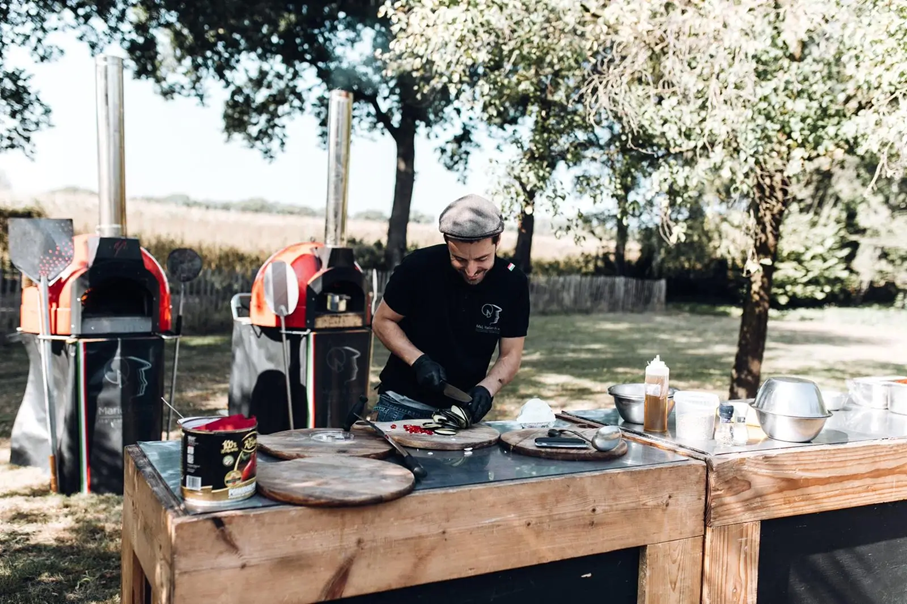When you think of Italian cuisine, the first thing that often comes to mind is pizza. Simple yet sophisticated, Italian pizza has conquered hearts around the globe. But there is much more to authentic pizza than just dough, cheese, and tomato sauce. Its story spans centuries, its variations are deeply regional, and its preparation is rooted in tradition.
Pizza is not just a dish—it is a cultural icon that represents Italian pride, passion, and philosophy of food: fresh, honest, and shared. Understanding what makes true Italian pizza different is not just about ingredients or cooking methods. It’s about heritage and respect for craft.
Where Italian pizza comes from
Italian pizza has its roots in Naples, a city that still sets the gold standard. The earliest versions of pizza were flatbreads with toppings, eaten by the poor as a cheap and quick meal. By the late 1700s, what we now recognize as pizza started to appear, with tomatoes introduced from the Americas and mozzarella from local buffalo milk.
One of the earliest and most iconic versions is the Pizza Margherita, named after Queen Margherita of Savoy in 1889. It features the colors of the Italian flag—red (tomato), white (mozzarella), and green (basil)—and remains a symbol of Italian culinary simplicity.
What defines authentic Italian pizza
Authentic Italian pizza follows very specific traditions. The dough must rise slowly, often for at least 24 hours, to develop flavor and texture. It is made with just four ingredients: flour, yeast, water, and salt.
The toppings are minimal but of the highest quality. San Marzano tomatoes from the volcanic soil near Mount Vesuvius are preferred for their sweetness and low acidity. Mozzarella di Bufala Campana is used for its rich and creamy texture.
Wood-fired ovens, reaching temperatures of 450–500°C, bake the pizza in about 90 seconds. This results in a chewy yet crisp crust with a slight char, known as leopard spotting.
Regional differences across Italy
Though Naples is home to the classic pizza, every region in Italy has developed its own version. In Rome, pizza is thinner and crispier, often cut into rectangles and sold by weight. In Sicily, pizza is thick-crusted, spongier, and often topped with local ingredients like anchovies, onions, and caciocavallo cheese.
In Liguria, you might find pizza bianca, a version without tomato sauce, often seasoned simply with rosemary, olive oil, and salt. Each style reflects local taste and available ingredients, showing how deeply pizza is rooted in place.
Italian pizza vs. global interpretations
Pizza around the world has been transformed into countless styles, from New York’s thin, foldable slices to Chicago’s deep-dish pies. While delicious in their own right, they often stray far from Italian tradition.
Italian pizza is not about piling on toppings but about balance. A thin layer of sauce, a few slices of fresh mozzarella, a sprinkle of basil, and a drizzle of olive oil—nothing more is needed. The goal is to taste each ingredient, not overwhelm the palate.
The role of Italian pizza in daily life
In Italy, pizza is a social experience. Families and friends gather at pizzerias, often on weekends, to enjoy fresh pizza straight from the oven. It’s not fast food; it’s food that brings people together.
Pizzerias are often small, family-run businesses passed down through generations. Many Italians have a favorite local spot where the pizzaiolo knows their order by heart.
Modern appreciation for traditional pizza
Across the world, there’s a growing appreciation for real Italian pizza. Food lovers are seeking out authentic experiences, and chefs are respecting traditional methods. One such example of this dedication can be seen at Lazzarella, a place where true Italian flavors are honored and celebrated. Their approach focuses on quality ingredients, original recipes, and the unmistakable character of Neapolitan craftsmanship.
The essential ingredients for true Italian flavor
Creating real Italian pizza starts with selecting the right components:
- Flour: Ideally Italian “00” flour, known for its softness and elasticity.
- Tomatoes: San Marzano, grown in volcanic soil, have the perfect balance of sweetness and acidity.
- Cheese: Mozzarella di Bufala or Fior di Latte, offering a creamy melt and fresh flavor.
- Olive oil: Cold-pressed extra virgin, drizzled on top after baking.
- Fresh basil: For aroma and a burst of herbal brightness.
These ingredients are used sparingly but purposefully, allowing each flavor to stand out.
Pizza making as an art form
For skilled pizzaioli (pizza makers), preparing pizza is more than cooking—it’s a craft. Dough handling, fermentation time, oven temperature, and timing all require intuition and practice. Some pizzaioli spend years perfecting their technique.
This dedication is evident in every bite of authentic pizza. The dough is airy, the crust blistered, the flavors clean and distinct. No single element dominates.
Pizza’s place in Italian identity
Pizza is as much a part of Italy’s cultural identity as language or music. In 2017, UNESCO recognized the art of Neapolitan pizza-making as an Intangible Cultural Heritage of Humanity. This honor acknowledges how important pizza is—not just as food, but as tradition and art.
It reflects a philosophy: less is more, quality over quantity, and food as a celebration of life.
Where to enjoy authentic Italian pizza today
Today, authentic Italian pizza can be found far beyond Italy’s borders, but quality varies. To experience the real deal, look for places that:
- Use slow-risen dough
- Cook in wood-fired ovens
- Source high-quality, Italian ingredients
- Keep the toppings simple and traditional
Whether in Naples or abroad, the goal is always the same: to serve pizza that respects its heritage.
Lazzarella is one such place where the respect for tradition and passion for flavor come together to offer a true Italian experience. Their dedication to authenticity makes them a standout for anyone wanting to taste how pizza was meant to be.







Click here to change your cookie preferences